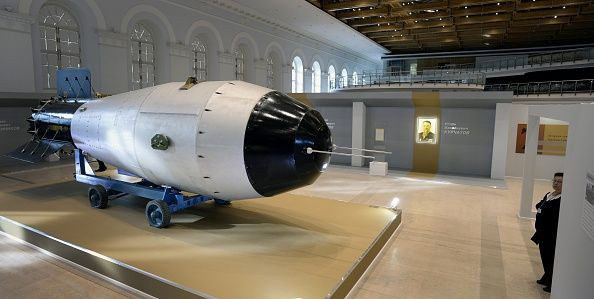Russia Tests Hypersonic PAK-DA Bomber Capable Of Launching Nuclear Weapons From Space, Avoiding Radar

Russia's latest military weapon could be a stealth bomber capable of flying at hypersonic speeds and dropping nuclear bombs from space. The hypersonic PAK-DA strategic bomber will be able to fly anywhere in the world invisible to radar and is expected to take flight in 2020, according to the Kremlin.
The aircraft reaching five times the speed of sound will be armed with long-range ballistics, including hypersonic missiles with nuclear capabilities. It comes with a hybrid Turbofan engine that allows it to run on traditional kerosene fuel or methane and oxygen. It will allegedly be able to travel any distance in two hours.
"The idea is that the bomber will take off from a normal home airfield to patrol Russian airspace. Upon command it will ascend into outer space, strike a target with nuclear warheads and then return to its home base," Lt. Col. Aleksei Solodovnikov told RIA Novosti Wednesday. "We are cooperating with Russia’s Central Aerohydrodynamic Institute on the design of an airframe and the aircraft's characteristics. I think that its lift-off mass must be 20-25 metric tons for it to be a strike aircraft. It will [be able to accelerate to] hypersonic speed in rocket mode."
Russia has beefed up its military presence in recent years in an effort to flex its muscles on the international stage. The PAK-DA comes from the Tupolev Design Bureau, designers of Russia's Tu-95 bombers that were intercepted by U.S. fighter jets near the Alaskan coast on July 4, 2015.
General Sergei Karakayev, commander of Russian Strategic Missile Forces, said a model of the PAK-DA's engine had been tested at Russia's Military Academy in Serpukhovo. It's expected to be a major attraction during September's International Military Technology Forum in Moscow.
"The unit's operational ability had been proven," Karakayev said. "Right now we are reviewing the nuances, which will take approximately one year. Once we agree on the plans, we will start building the engine itself. In the second year of development (2018) we will build the hardware. Perhaps I am rushing things, and some issues may arise, but by 2020 we should have a fully-functioning product."
Russia is the world's fourth-biggest spender on defense, after the United States, Saudi Arabia and China. Russia's military spending jumped last year by 7.5 percent to $66.4 billion.
© Copyright IBTimes 2024. All rights reserved.





















